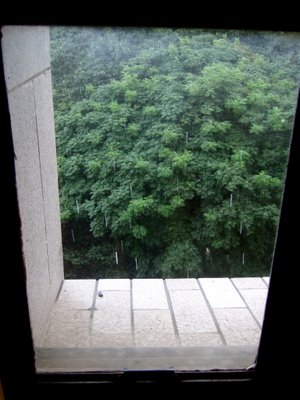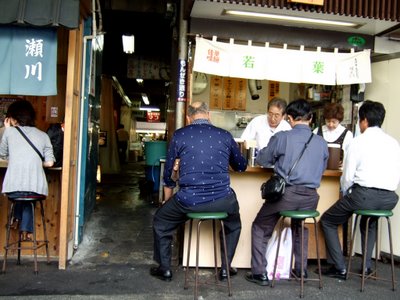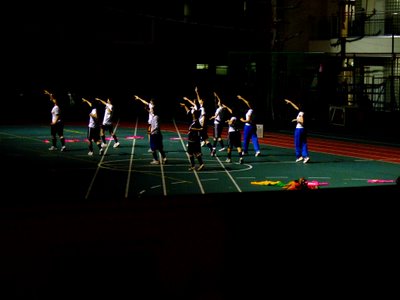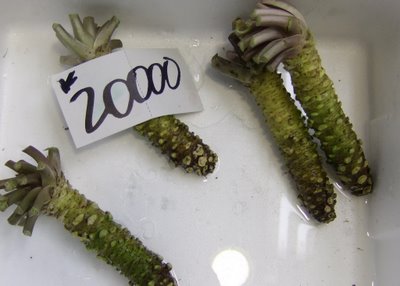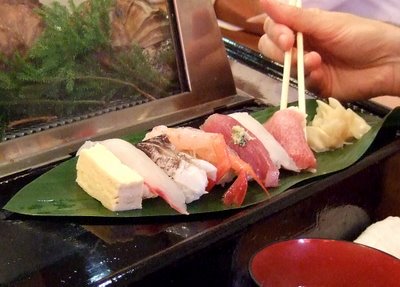kamakura
day 37
japan's history is a fascinating story of military battles and political intrigue, and as a result it is filled with heroic events and short life spans.
in 1159, civil war between the minamoto and taira clans ends with annihilation of the minamotos. two minamoto sons were spared (aged 13 and 1). the 13 year old was banished to the countryside, and the story of his fighting back to power by age 33 is remarkable. you can read the full account here.
to make a long story short, he first suffers defeats, but his brother and cousin hear his rally cry and come to his aid. together, they overthrow the enemy with brilliant strategy, and in return he kills both of them so they do not usurp his power. he kills a lot of other people too, including his cousin's 10 yr old son (which i thought was a little callous considering his own life story) so i wasn't too unhappy to read that he accidentally falls off a horse and later dies while still in a coma.
anyway, the relevance is that he becomes the 'supreme commander', leader of the first shogunate (military government) of the entire nation, and he establishes his headquarters in his home town of kamakura.
there's a little more to the story, so i'll fill you in. after falling off his horse, his 17 year old son takes over, but things go downhill and after four years of civil war, the son's wife and 6yr old child are killed. the son is deported to the same countryside as his father, but the story doesn't recycle because he's assassinated the next year.
the second son becomes shogun at age 11, and you can guess this doesn't last long. at 27 he's assassinated by his 19 year old nephew, who covets the rule. but he doesn't get it, because he's executed for his efforts. and this ends the bloodline.
it doesn't end the story though. kamakura remains a seat of power for quite a while. during this time, kublai kan sends 33,000 troops in 900 ships to punish japan for not recognizing his suzerainty (i love that word). fortunately for japan, his entire force is wiped out by a typhoon. to add insult and injury, the emperor beheads the next 5 mongolian emissaries, which really makes kublai unhappy. next he sends 140,000 troops in 4,000 ships, and - can you believe it - another freak typhoon wipes them out too.
you'd think everyone would be happy at this point, but the japanese warlords who fought against the mongolians were unhappy with their rewards and after more battles, emperors being banished and returning to power, there's one almighty battle to end the era. the leader of 200,000 troops sent by kamakura to attack kyoto defects and eventually the kamakurans are slaughtered. 870 samurai commit mass suicide. this brings the rule of kamakura to an end in 1333.
one last note, in 1953 professor suzuki of tokyo university excavated near the beach and found the remains of 556 battle victims. the site is near the first torii gate of tsurugaoka hachimangu shrine, and is now a mcdonalds.

we start our day with onigiri made fresh by this gentleman with a tiny shop on our street.
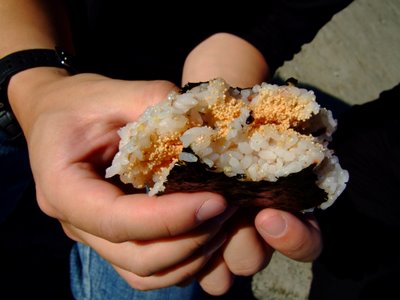
see how delicious.

our local station mejiro. it's my favorite.

so common. either all japanese people are sleep-deprived, or the train is soporific. great entertainment.

kamakura's a great tourist town. nice shops, quiet, clean.



the rice crackers were made fresh right here, and they were delicious. hard though.

surveying the rumble of the surf. to our surprise, there's quite a nice beach in kamakura.

and the locals make the best of this 1 foot swell.


the big attraction (never mind the pun) is the buddha and many temples.
we hiked to the top of that hill in the background and along the ridge to another temple.

very peaceful.

really nice bush walk.


the walk spat us out by the nicest starbucks i've ever seen. we didn't stop though, there were better things ahead.

okonomiyaki. you just can't lose with food here.
